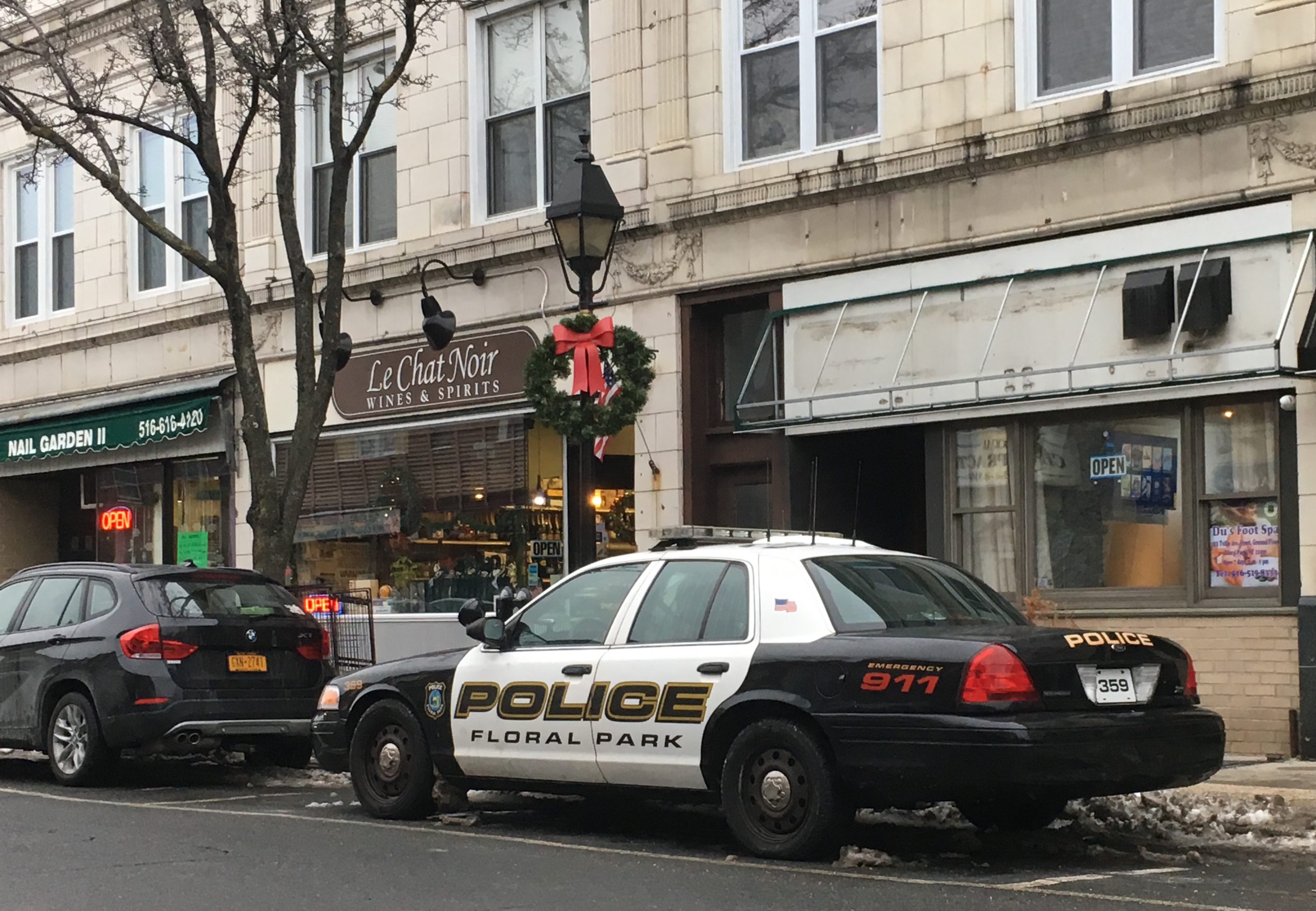Since becoming police commissioner of the Village of Floral Park in 2011, Stephen McAllister has watched property crimes dwindle.
Statistics from the 34-member department show that property crimes have dropped nearly 45 percent in McAllister’s tenure compared with the previous eight years.
“Work smarter, not harder,” McAllister said about methodologies he has brought to the department. McAllister believes that identifying the underlying motives for crimes like robbery, burglary, larceny and auto theft has been one of the key changes in the department.
Identifying criminal patterns and trends quickly not only reduces the frequency of offenses, but of repeat offenders overall, according to McAllister.
McAllister, a former New York Police Department inspector who served the city for 25 years, called himself a “product of COMPStat,” attributing many of the practices he implements in the village Police Department to the crime data-driven practice that he also used in 2008.
Overall, 68 robberies were reported in Floral Park from 2003 to 2010, and 33 were reported from 2011 to 2018, a 51 percent decrease. Auto theft showed the next most significant change, a 48 percent drop from 60 incidents to 31 between the two periods.
Burglary reports fell 40 percent from 128 to 76 between the two periods, and reports of larceny dropped 35 percent from 487 cases to 313.
A newly released data study by Alarms.org, a security website, named Floral Park the third safest place to live in the state, based on FBI crime statistics.
Growing up in Brooklyn, McAllister has noticed trends in property crimes change over time, as early as his adolescence and early time with the NYPD.
Stealing cars was like a sport to some people in the 1980s, McAllister jokingly recalled. Manufacturers’ design improvements have made auto theft more difficult, according to McAllister, but in his time as commissioner he has still seen at least four instances of auto theft after keys were left in the vehicle.
McAllister also said he was excited to start training the new officers that have recently joined the department. The village Board of Trustees has spent several recent meetings promoting and swearing in police officers, following retirements of officers with over 200 years of experience.
Most of the new officers, and those that are already members of the force, are former NYPD officers, and were “brought up with the same schooling,” McAllister said.
Though much of the credit goes to the department, McAllister said, he believes that the sense of community in the village is a major fact in keeping crime rates low.
“A lot of people will talk about what community policing is like,” McAllister said. “To me, Floral Park defines community policing; it’s the perfect example.”
Residents regularly call and identify suspicious activity, which McAllister said he appreciates. Even when no criminality is found, it shows that neighbors care about each other and the tightly knit, 16,000-resident community, McAllister said.
With as many as four patrol cars present on every tour of the village, the police are very visible in the densely packed 1.6-square-mile village, McAllister said.
Moving to Floral Park was one of the best decisions he and his family ever made, McAllister said, and he has cherished being the village’s guardian over the last eight years.
McAllister said he has also made a tremendous investment in the village’s schools with police resources. The department has two school resource officers who speak to students on a variety of current events.
McAllister also coaches Little League and Police Athletic League football and lacrosse.
Some of the youngest children McAllister coached are now seniors in high school and have committed to colleges for lacrosse, something that statistics can’t truly measure.
“I’m just as proud of that as I am of the statistics,” McAllister said.



